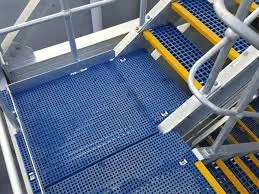
-
 Afrikaans
Afrikaans -
 Albanian
Albanian -
 Amharic
Amharic -
 Arabic
Arabic -
 Armenian
Armenian -
 Azerbaijani
Azerbaijani -
 Basque
Basque -
 Belarusian
Belarusian -
 Bengali
Bengali -
 Bosnian
Bosnian -
 Bulgarian
Bulgarian -
 Catalan
Catalan -
 Cebuano
Cebuano -
 China
China -
 China (Taiwan)
China (Taiwan) -
 Corsican
Corsican -
 Croatian
Croatian -
 Czech
Czech -
 Danish
Danish -
 Dutch
Dutch -
 English
English -
 Esperanto
Esperanto -
 Estonian
Estonian -
 Finnish
Finnish -
 French
French -
 Frisian
Frisian -
 Galician
Galician -
 Georgian
Georgian -
 German
German -
 Greek
Greek -
 Gujarati
Gujarati -
 Haitian Creole
Haitian Creole -
 hausa
hausa -
 hawaiian
hawaiian -
 Hebrew
Hebrew -
 Hindi
Hindi -
 Miao
Miao -
 Hungarian
Hungarian -
 Icelandic
Icelandic -
 igbo
igbo -
 Indonesian
Indonesian -
 irish
irish -
 Italian
Italian -
 Japanese
Japanese -
 Javanese
Javanese -
 Kannada
Kannada -
 kazakh
kazakh -
 Khmer
Khmer -
 Rwandese
Rwandese -
 Korean
Korean -
 Kurdish
Kurdish -
 Kyrgyz
Kyrgyz -
 Lao
Lao -
 Latin
Latin -
 Latvian
Latvian -
 Lithuanian
Lithuanian -
 Luxembourgish
Luxembourgish -
 Macedonian
Macedonian -
 Malgashi
Malgashi -
 Malay
Malay -
 Malayalam
Malayalam -
 Maltese
Maltese -
 Maori
Maori -
 Marathi
Marathi -
 Mongolian
Mongolian -
 Myanmar
Myanmar -
 Nepali
Nepali -
 Norwegian
Norwegian -
 Norwegian
Norwegian -
 Occitan
Occitan -
 Pashto
Pashto -
 Persian
Persian -
 Polish
Polish -
 Portuguese
Portuguese -
 Punjabi
Punjabi -
 Romanian
Romanian -
 Russian
Russian -
 Samoan
Samoan -
 Scottish Gaelic
Scottish Gaelic -
 Serbian
Serbian -
 Sesotho
Sesotho -
 Shona
Shona -
 Sindhi
Sindhi -
 Sinhala
Sinhala -
 Slovak
Slovak -
 Slovenian
Slovenian -
 Somali
Somali -
 Spanish
Spanish -
 Sundanese
Sundanese -
 Swahili
Swahili -
 Swedish
Swedish -
 Tagalog
Tagalog -
 Tajik
Tajik -
 Tamil
Tamil -
 Tatar
Tatar -
 Telugu
Telugu -
 Thai
Thai -
 Turkish
Turkish -
 Turkmen
Turkmen -
 Ukrainian
Ukrainian -
 Urdu
Urdu -
 Uighur
Uighur -
 Uzbek
Uzbek -
 Vietnamese
Vietnamese -
 Welsh
Welsh -
 Bantu
Bantu -
 Yiddish
Yiddish -
 Yoruba
Yoruba -
 Zulu
Zulu
Innovative Solutions for Efficient FRP Ductwork Design and Installation Techniques
Understanding FRP Ductwork Advantages and Applications
FRP, or Fiber Reinforced Plastic, ductwork is an innovative solution in the construction and engineering sectors, specifically designed to address the deficiencies often encountered with traditional duct materials like metal and fiberglass. As industries continue to evolve, the demand for more efficient, durable, and environmentally friendly materials has propelled the adoption of FRP duct systems. This article will explore the characteristics, advantages, and applications of FRP ductwork.
Characteristics of FRP Ductwork
FRP ductwork is composed of a polymer matrix reinforced with fibers, commonly glass or carbon. This combination results in a material that boasts an impressive strength-to-weight ratio, making it significantly lighter than steel or aluminum. Additionally, FRP ductwork exhibits exceptional resistance to corrosion, chemicals, and extreme temperatures, which is crucial in environments such as industrial plants, wastewater treatment facilities, and commercial buildings.
The manufacturing process of FRP involves molding techniques that allow for various shapes and sizes. These duct systems can be custom-designed to fit the specific needs of any project, providing flexibility that standardized metal ducting may not offer. Moreover, the smooth interior surface of FRP ducts facilitates improved airflow and reduces the accumulation of dust and debris, supporting more efficient HVAC systems.
Advantages of FRP Ductwork
1. Corrosion Resistance One of the primary reasons for the increasing preference for FRP ducting is its outstanding resistance to corrosion. Unlike metal ductwork, which can rust and degrade when exposed to moisture and chemical reactions, FRP remains unaffected, thereby extending the lifespan of the ducting system.
2. Lightweight The lightweight nature of FRP ductwork simplifies handling, installation, and transportation. This feature reduces labor costs and time during construction, making it an economically attractive option.
3. Thermal Insulation FRP materials provide excellent thermal insulation properties, enhancing energy efficiency in heating, ventilation, and air conditioning systems. This characteristic helps maintain stable temperatures and reduces energy consumption.
4. Low Maintenance Requirements Due to its resistance to corrosion and debris accumulation, FRP ductwork requires minimal maintenance compared to traditional ducting systems. This can lead to cost savings for facilities over time.
frp ductwork

5. Customizability As mentioned earlier, FRP ducts can be molded into various shapes and sizes tailored to specific project requirements. This adaptability makes them suitable for a wide range of applications.
Applications of FRP Ductwork
The applications of FRP ductwork are vast and varied, spanning several industries
- Chemical Plants The chemical industry is one of the primary beneficiaries of FRP ductwork due to its resistance to various corrosive substances. FRP ducts are commonly used in exhaust systems and venting applications in these facilities.
- Wastewater Treatment Facilities In environments exposed to harsh chemicals and moisture, FRP ducting excels as it helps prevent corrosion while effectively managing airflow and odors.
- Food Processing The food processing industry benefits from FRP ductwork's hygienic properties, ensuring ease of cleaning and maintenance, which is essential in preventing contamination.
- HVAC Systems In commercial and residential buildings, FRP ducting can be integrated into HVAC systems, providing a lightweight and efficient alternative for air distribution.
- Power Plants Due to their fire-retardant properties, FRP ducts are often deployed in power plants for ventilation and access to hazardous areas without compromising safety or efficiency.
Conclusion
In summary, FRP ductwork represents a significant advancement in ducting technology, combining durability, efficiency, and versatility. Its corrosion resistance, lightweight nature, and low maintenance requirements make it an attractive choice for a variety of industries. As the demand for sustainable and cost-effective solutions in construction continues to climb, it is likely that FRP duct systems will play an increasingly important role in shaping the future of infrastructure and industrial applications. Whether in chemical plants, wastewater facilities, or HVAC systems, the benefits of FRP ductwork position it as a leading material for modern engineering challenges.









